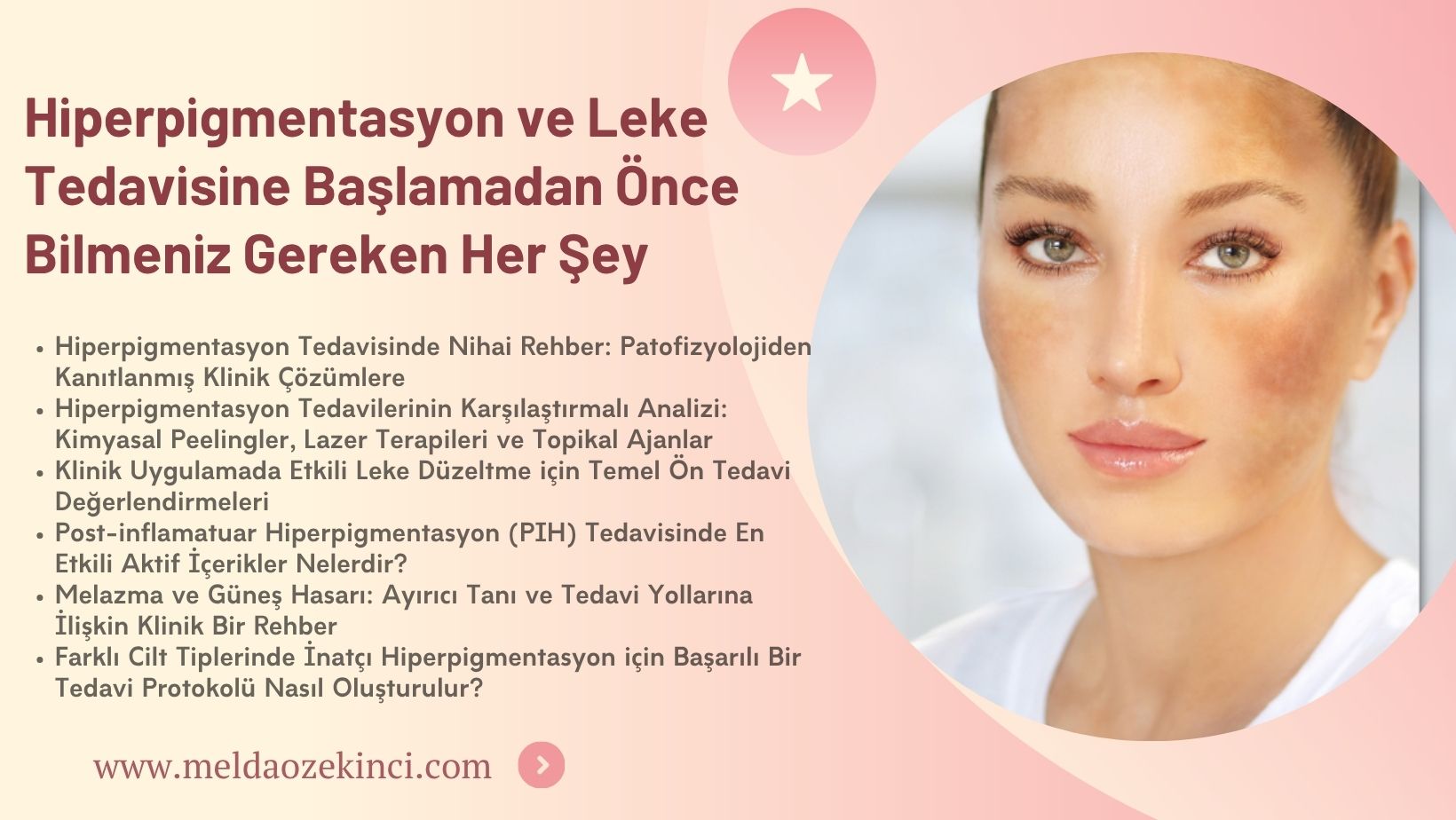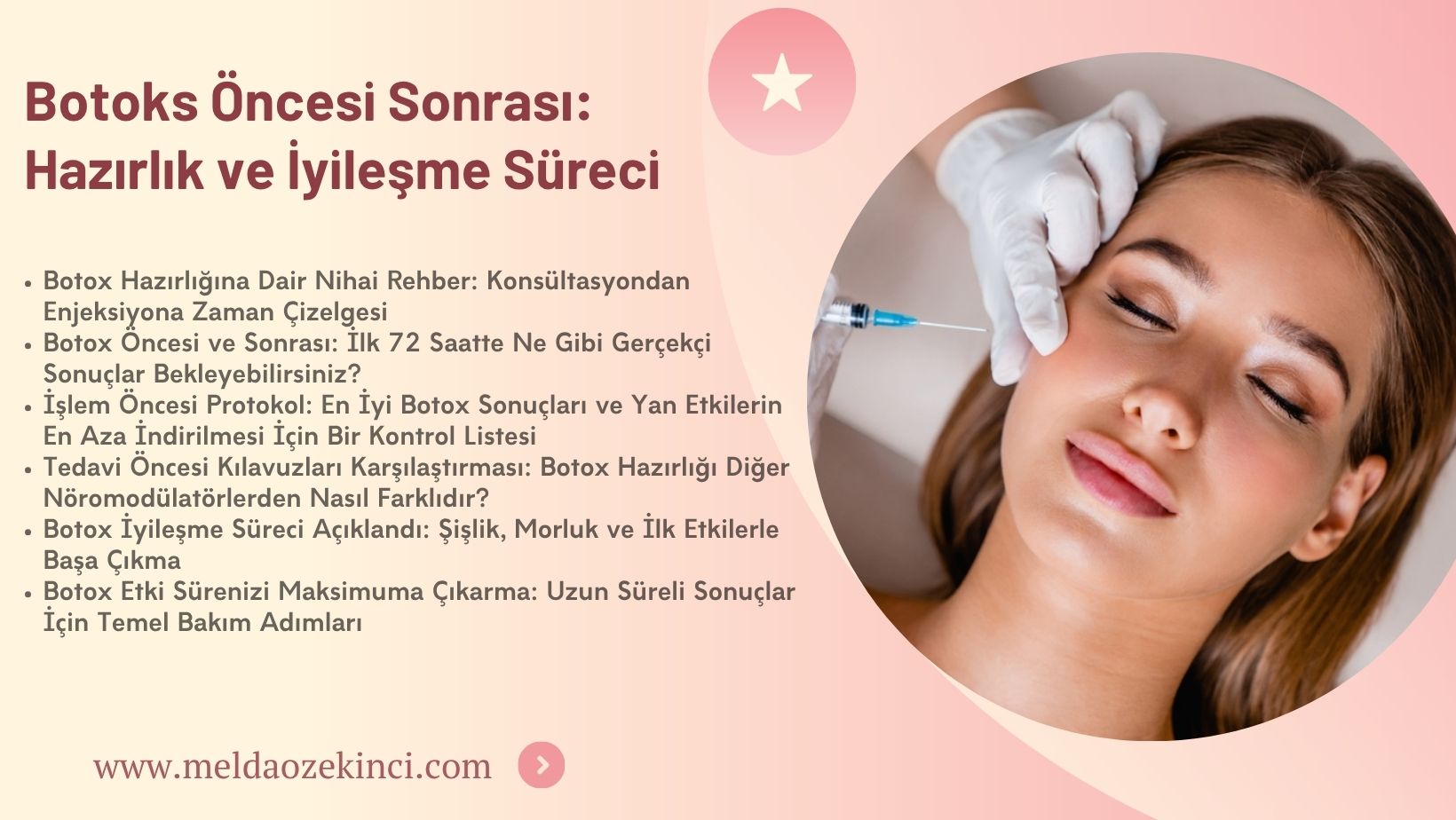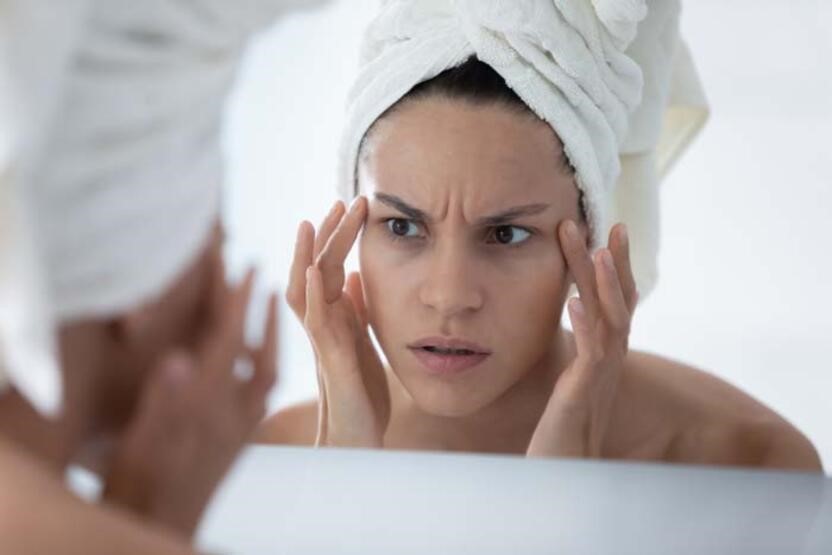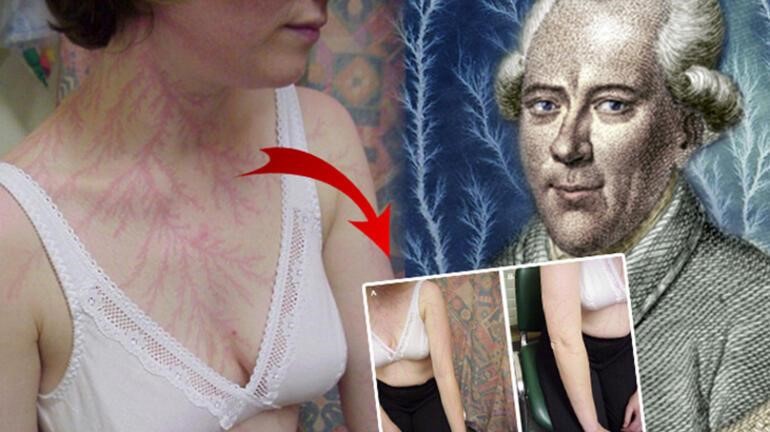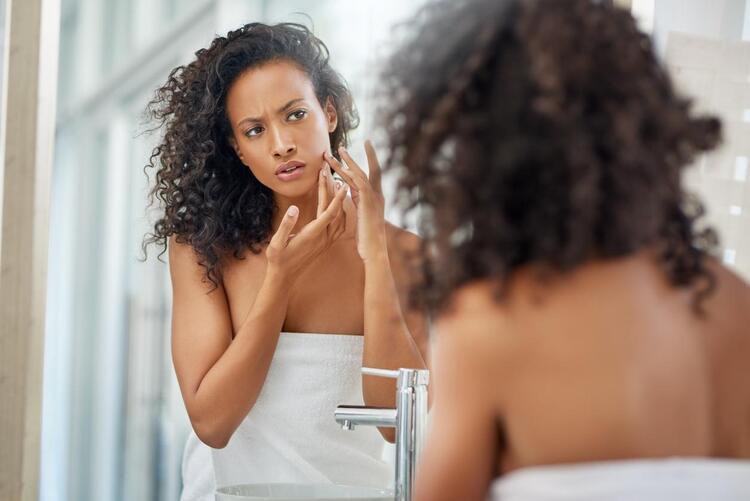
Skin spots are a common problem for all of us, men and women. Technology has improved and we no longer have to deal with skin blemishes for the rest of our lives.
1- Why do skin spots occur?

Concentration of the melanin pigment, which gives the skin its color, in one area causes skin spots. Concentration of melanin pigment in one area can be caused by excessive sunbathing, or it can also be caused by any underlying disease.
Sometimes stains may remain as a result of a dermatological skin condition, or the irregular work of hormones contributes to this. Sometimes, stains can be observed after cosmetic procedures applied by people who are not dermatologists.
Apart from this, unconscious use of chemical products on the skin and excessive use of solarium may be the reason for this. Skin spots can also occur over time in the presence of genetics, that is, in the presence of a familial history.
2- What methods can be used in the treatment of stains

Skin spot treatment may vary depending on many reasons. If a person has an underlying health condition, the dermatologist will recommend the best treatment for that condition. Treating the underlying condition often resolves associated skin problems. Treatment options include laser/light therapy, chemical peels, and topical creams. Alternatively, camouflaging makeup can be applied to cover the stain.
Chemical peeling method: Specially developed chemical solutions are used in the chemical peeling method. The most commonly used chemical solution in the treatment of stains is fruit acids called glycolic acid and salicylic acid. This treatment can be applied safely even in people with dark skin type with mild blemishes. Sessions can be done as 4-6 applications with intervals of 2-4 weeks.
Enzyme peeling (spot mask): Enzyme peeling is a special peeling method that has been used in spot treatment in recent years. The mask, which is a special mixture, is applied to the skin and left for 8-10 hours. At the end of this period, the mask is removed with warm water and then a special follow-up cream is applied for 4-6 months.
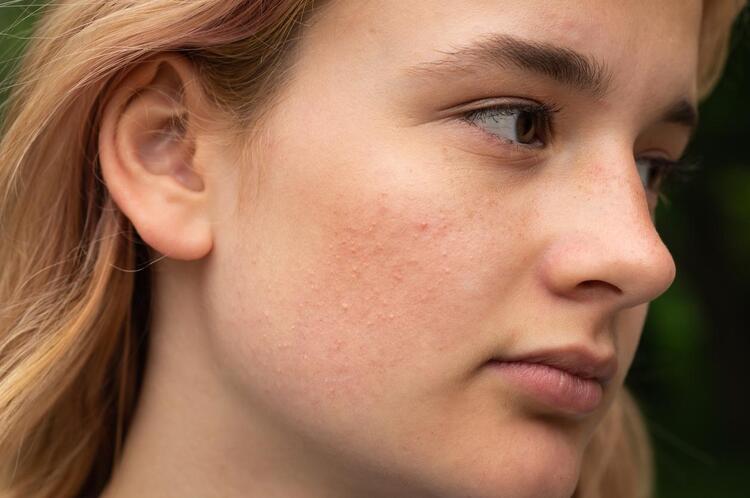
Mesotherapy: Spots can be treated by injecting solutions consisting of special spot-removing drugs under the skin. This treatment method can be combined with chemical or enzyme peeling treatments or laser treatments.
Laser/light treatments: Different lasers can be used in spot treatment. Fractional lasers that peel the top layer of the skin, Q-switched NdYag lasers that target melanin, which we call color cell, and IPL or blue light photodynamic devices, which are concentrated light sources, are the most commonly used light systems. In recent years, with the microneedle fractional radiofrequency system, an effective treatment is performed on both acne and blemishes without peeling the skin.
Color lightening creams: Creams can be used alone or in combination with the processes listed above for spot treatment. Creams containing hydroquinone, vitamin C, vitamin E, arbutin, kojic acid, glycolic acid are used most often in the treatment of stains. In addition, creams containing retinol have a peeling effect on the skin and can be used as an aid in spot treatment.
Sunscreen creams: Sunscreen creams must be used during spot treatment. These creams protect the skin from the effects of the sun in summer and winter and prevent the stain from getting darker.
3- How to treat acne spot?

Acne is a chronic disease of the skin. It usually starts in adolescence. It continues for many years with exacerbations and remissions and then regresses spontaneously. In the treatment of acne, it is aimed to heal the acne and prevent the scars that may occur afterwards. Accompanying blemishes in acne vulgaris is a very common condition. Therefore, both acne and spot treatment should be given together. This treatment varies according to the severity of the disease, the area of involvement of the disease, the age of the patient and the treatment preference of the patient. Topical treatments, systemic treatments, peelings and laser/light treatment are preferred.
Topical treatments applied in acne treatment; It can be in the form of cream, gel, pomade or lotion. The drugs applied in this topical treatment only affect the area they are applied to. Topical treatments alone are preferred in mild acne patients. In moderate and severe acne patients, systemic treatments should be given. As systemic treatment, antibiotics, drugs such as isotretinoin or hormones are mostly preferred. Antibiotic treatments usually last 3 months.
Many treatment options are sometimes used in combination to increase the effectiveness of treatment. Thanks to these prescribed drugs, both acne and blemishes are treated. Apart from these treatments, chemical peeling, skin care, laser/light treatments are also available.
4- Which areas are treated with spot treatment?
It gives very good results in laser/light spot treatment in all body parts. Sun and age spots that cause aesthetic problems, especially on the hands and face, are treated very successfully. In addition, chemical peeling can be applied both on the face and on the spots on other parts of the body.
5- Is there an age limit for spot treatment?
Creams given for spot treatment can be recommended for everyone except the child age group. However, it should be noted that the other cosmetic procedures to be performed are above the age of 18 for chemical peeling and laser/light therapy.
6- Is spot treatment done only in winter?
Although sunspots are the first thing that comes to mind when skin spots are mentioned, spots; It also occurs due to some skin diseases due to the effect of the sun on the newly healed skin after being exposed to solarium light for tanning, pregnancy, taking birth control drugs, or after a wound or burn. The winter season is seen as the most suitable period for the treatment of these spots.
In the treatment of formed spots, a dermatologist must be consulted. It is important to create a treatment plan according to the structure of the stain, skin color and season. The first step in the treatment of blemishes is the continuation of sun protection throughout the treatment.
While some spot lightening creams are sufficient for some of the patients, some patients need procedures such as peeling or laser. The most common procedure for this purpose is glycolic acid salicylic acid chemical peels made with fruit acids.
Peelings performed at intervals of 2-4 weeks allow the stained area on the upper layers of the skin to be flaked and peeled off. This chemical peeling process can only be done in the winter months.
7- Will the spots appear after treatment?
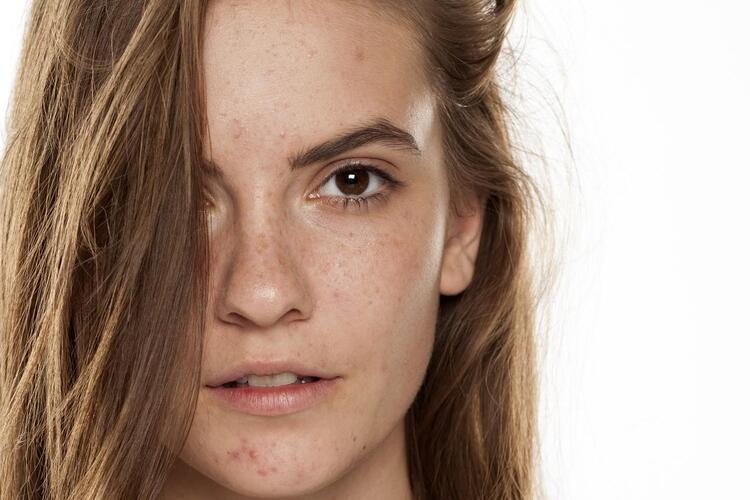
In all stain treatment methods, there is a low probability that the stain will reappear in the same area after the stain treatment is done. Therefore, a sunscreen cream with at least 30 SPF should be used continuously in summer and winter, and creams containing vitamin E or vitamin C should be continued to suppress the formation of spots.
In addition, when choosing a sunscreen cream, a broad-spectrum UVA and UVB chemical barrier should be chosen, and a physical barrier sunscreen containing iron oxide, which also provides protection from visible light, which we call physical protector, should be chosen.
8- What should be considered after spot treatment?
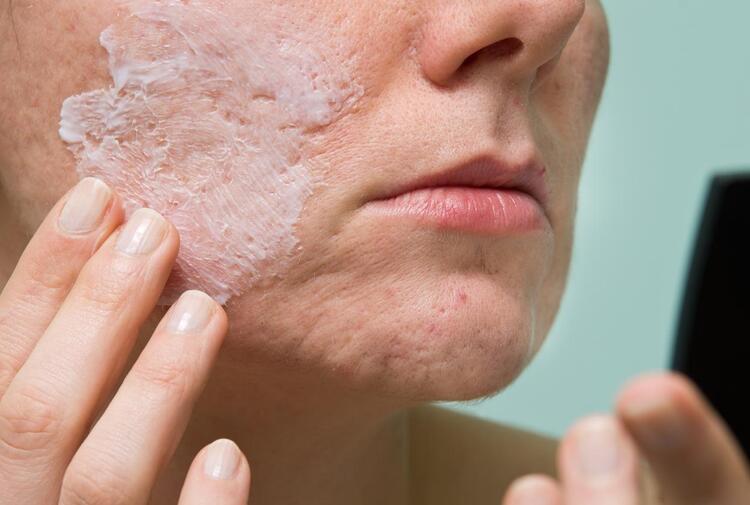
It is very important to be protected from the harmful rays of the sun in order for the stain treatment to be permanent. Precautions to be taken by the person such as using a sunscreen of SPF 30 or higher in summer and winter, wearing a wide-brimmed hat in summer, wearing sunscreen, sitting in the shade and not smoking are also important in order to prevent the reoccurrence of stains. Immediately after spot treatment, it is necessary to avoid procedures such as scrubs and peeling masks that may irritate the skin.
In addition, taking vitamin D supplements is absolutely necessary, especially for people who are constantly protected from sun rays and use sunscreen. Because the need for these people increases even more. Vitamin D is a very useful vitamin for hair, nails and skin. It is recommended to take 1000 IU of vitamin D per day, especially under the control of a doctor.
 English
English 



